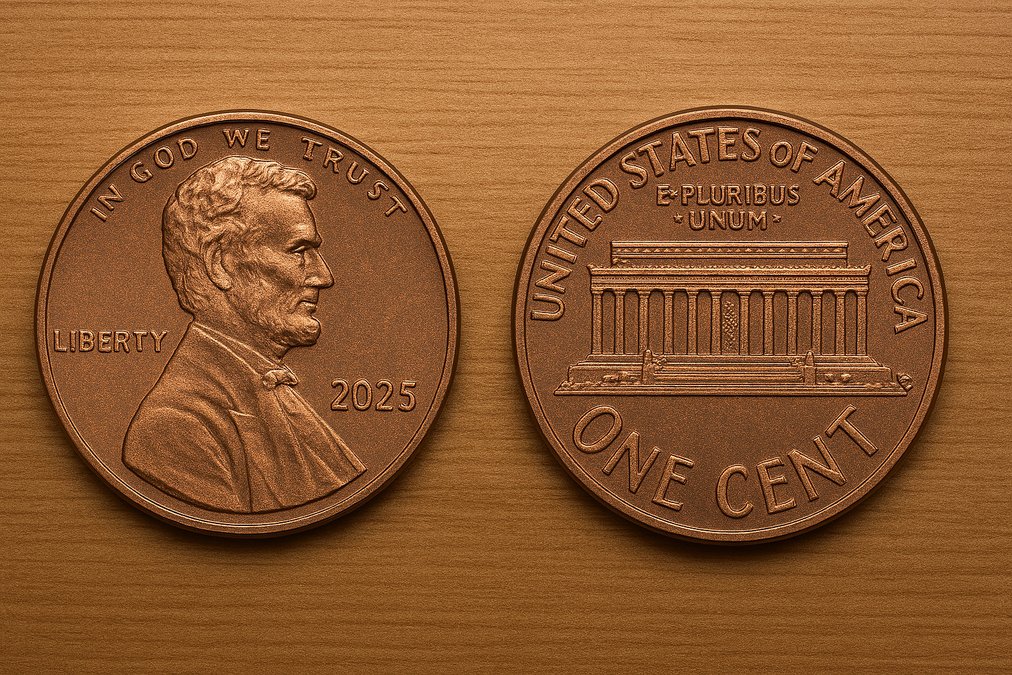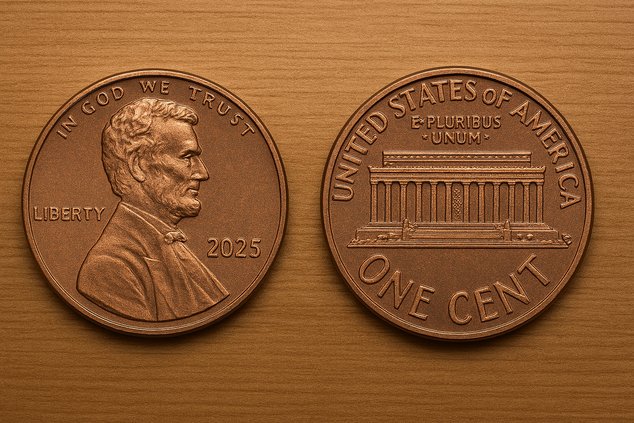The final order for copper blanks has been ordered and the U.S. Mint’s production of the penny will stop sometime in early 2026. Minting of the Lincoln cent, with the profile of America’s 16th President Abraham Lincoln in the longest-running coin series ever produced at 116 years, will end.
Just as 19th Century New England author Edward Bellamy said it would.
Well, not exactly. The United States has been slowly moving toward a cashless society for a while, and more slowly than some other countries. Canada ended its cent production in 2013; Australia in 1992. Discontinuing lower value coins in Europe includes Finland, Ireland, and Norway. Sweden is almost entirely cashless, with a reported 8% of small cash transactions in 2022.
Eliminating the penny is a small step, according to Bellamy. His popular utopian time travel novel “Looking Backward” published in 1888 envisioned a socialist makeover of the country’s economic system. Not “socialist,” per se, but with nationalized elements of land ownership, food production and distribution, health care and industrialized labor as a panacea for the economic and social turmoil in the late 1800s. Bellamy’s utopia of the year 2000 featured elevator music, cable telephone, and self checkouts in warehouse box stores (ala Sam’s Club) using debit cards in a cashless society, all loaded with the same amount of money per person. Workers retired at age 45 with benefits and workers with especially dangerous, difficult or onerous jobs worked fewer hours per week. Civil suits were ended and criminal behavior was treated as a medical issue.
Aside from missing the mark by 25 years, Bellamy’s predictions were well-received by the public in the 1890s. Between first publication and the 1930s, more than 532,000 books were sold in this country; more than 235,000 were released in Great Britain.
A difference making no difference
The U.S. Mint notes that its rationale for discontinuance is cost, with each penny costing 3.7 cents to produce. As of now, the Mint is making no plans for recall. For decades, penny production has far outstripped other coins produced, numbering in the billions annually. Officials have estimated that with the exclusion of 2026 mintage, there are more than 114 billion cents still in circulation, with 3.172 billion minted in 2024 and according to its July Congressional report, 3.12 total billion in 2025, with 1.53 billion at the Denver mint and 1.59 billion at Philadelphia.
Normally, the penny is the first coin produced during the fiscal year, so 2025 production may extend into 2026 depending upon remaining planchet supply. There is precedent for extended runs; it’s doubtful that any pennies dated 2026 will be produced owing to the cost of die preparation.
Some agencies figure that even that number is a little low, because of the way pennies are treated by the buying public. There could be upwards of 240 billion still lying around somewhere in homes, tossed into jars, boxes, sacks or in forgotten corners – even in “leave a penny, take a penny” containers next to the cash registers in businesses. Rolls of coins obtained at banks still contain the “whole copper” coins minted before 1982 and even the occasional “wheat heads” minted before 1959.
Collector activity increased
The cent is still included in the Mint’s plans for 2026, as it prepares for its U.S. 250th Anniversary Semiquincentennial Coin Program releases.
Just as it did for the Bicentennial celebration beginning in 1975, the Mint has redesigned circulating coins for the 250th. For one year only, new designs will be featured on the cent, nickel and dime. In continuation of the Quarter Program, five different designs will be issued.
Other releases are planned for boullion coins for collectors, in its “Best of the Mint” Program.
Meanwhile, coin collectors – both serious and erstwhile – have started rechecking their pocket change, coin boards, albums and penny jugs since the discontinuation announcement in May.
Scads of websites have popped up on social media focused on finding rarities and mint errors, with the promise of making a quick buck over and above established values for collected coins. While temporarily inflating some of the “trending” finds, it’s not expected to affect the activity around common releases, with attention still being paid to scarcity, condition and type as drivers of coin value.
The sentimentality of 2025 being the “final year” of penny release is also driving the price up. The 250th anniversary releases are also expected to command higher prices in the beginning, then settle back down, similar to what happened to the Bicentennial coins.
So, what’s ahead?
The country’s business will proceed as usual, for a long-expected while. The banks aren’t worried about new penny supply for the most part; they only order new pennies from the Federal Reserve when they need them. The rest of the time, they re-use and re-roll what they get from businesses and people looking to cash in.
In the meantime, officials will be taking a look at the nickel as the next thing to go. According to the Mint’s 2024 annual report, the cost to produce and distribute a nickel is approximately 13.8 cents. This includes 11 cents for production and 2.8 cents for distribution and administration. Consequently, the government loses money on every nickel minted, as its production cost is more than double face value.
No, we’re not headed for a Bellamyesque future. It’s much too positive for us. We seem to be headed in a more Orwellian direction.
There’s a saying in this country, “Find a penny, pick it up – and all day you’ll have good luck.”
It’s actually an American revision of an old English poem, but they picked up pins.
Maybe, eventually, there won’t be any pennies around to pick up, but not for a long time.
We can hope so.
— Mike Gilmore




